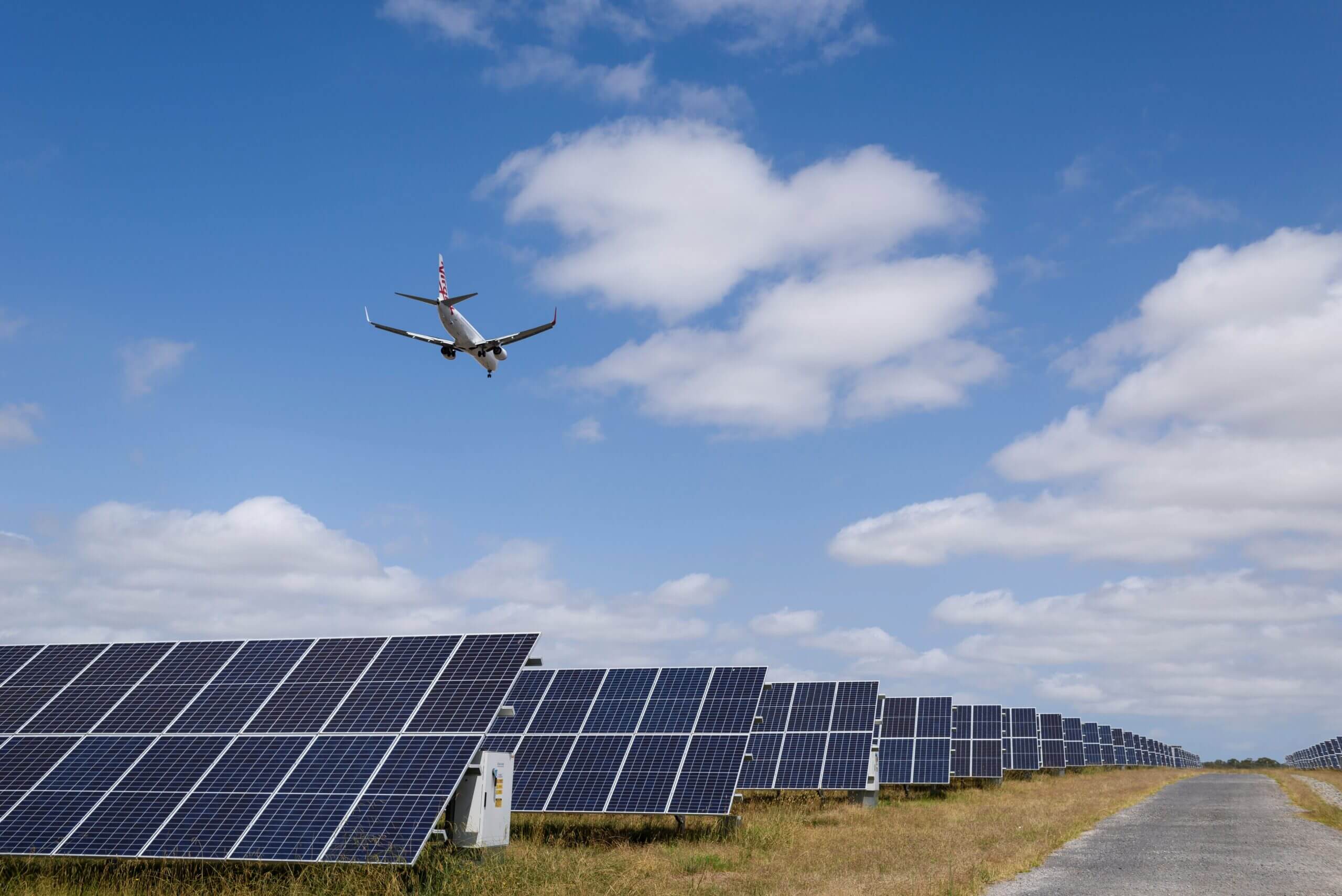As we wrap up 2023 and reflect on the year’s hot topics, it’s clear that ‘sustainability’ is the key word, having featured prominently in nearly every Industry Insider conversation.
But on reflection, it seems the word has evolved in recent years and expectations of what ‘sustainability’ has to offer a project or a developer is becoming much broader than simply complying with a set of pre-defined parameters.
So, we’ve begun an online series of conversations with key players about how they view sustainability, if that view has changed for them and what the future might hold. Here are the first…
Beyond Broccoli
In August, Industry Insider interviewed OMA Managing Partner, David Gianotten for our ‘Conversations’ series to discuss his philosophy and his body of work which includes some of the world’s most visionary projects (read the full interview here ).
During this conversation, he spoke of his concern at the general interpretation of sustainability within the industry and how benchmarks like LEED or the Green Star rating are not taking corporate responsibility to its full potential.
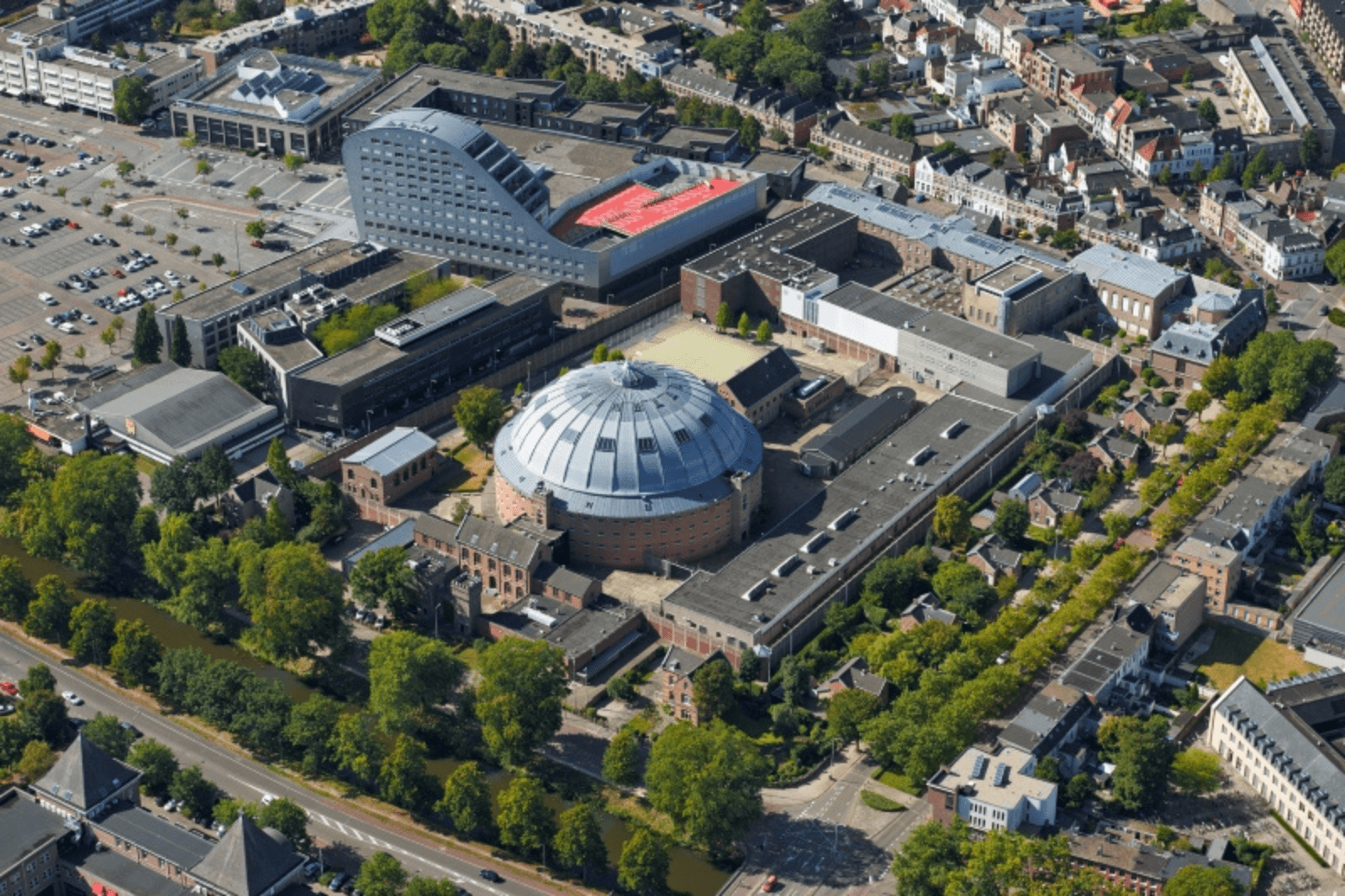 Photo credit: OMA – Koepelgevangenis in Breda Netherlands
Photo credit: OMA – Koepelgevangenis in Breda Netherlands
Gianotten calls these type of measures ‘broccoli architecture’, meaning that ‘they’re green but not really any better than anything else’.
“If you make sustainable architecture a tick-the-box system, people will tick the boxes and think, ‘Okay, I’m doing right’ so they do not contribute more,” Gianotten says.
“The word ‘sustainability’ for me has become an advertisement term in architecture. Very often it has become this green shaming or broccoli architecture, which doesn’t make any sense. You really have to look at the context, at the circumstance, at the client, to make sure you achieve more than any standard would dictate,” he said.
So, is the Australasian construction industry simply selling broccoli to clients? Or is it achieving far greater results than the mandatory tick-the-box expectations might suggest?
Back to the Future
Director at Plus Architecture, Ian Briggs says he’s seeing changes in the meaning of the ‘sustainability’ but they’re perhaps more conceptual than technical.
“I think up until recently, it has been a very technocratic-driven response. It’s about the systems that make power-use reductions or increasing insulation to make heating or cooling reductions. But all those things are, in a way, plugins to the system.
“Often plugins are about maintaining the status quo, but in a guilt-free manner. Because we’ve got solar panels on the roof, we don’t have to worry anymore, we’re doing our bit. But that’s only step one. Real sustainability is how you design sustainable communities,” he says.
Briggs says that where the sustainability conversation gets really interesting is when it’s a mindset rather than a plugin.
“It’s thinking about the communities that we live in. It’s understanding how we live, how we work, how we travel, how we look after our children, how we look after our elderly. It’s about creating a resilient, sustainable community that also has plugins. It’s about changing mindsets,” he says.
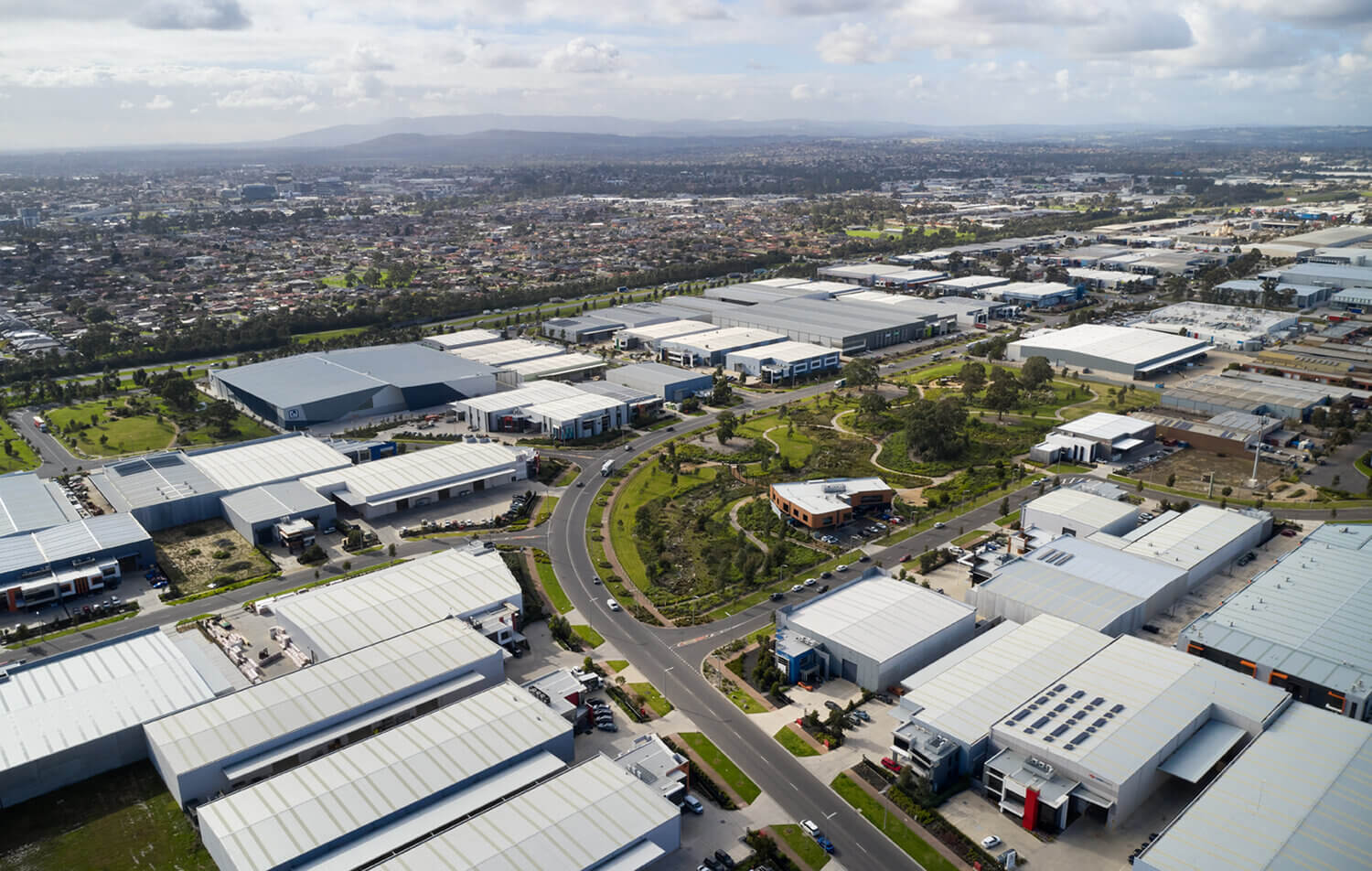 Photo credit: LOGIS Eco-Industrial Park – Image courtesy of Plus Architecture
Photo credit: LOGIS Eco-Industrial Park – Image courtesy of Plus Architecture
While on a study tour of Copenhagen this year, Briggs says he asked the architects and Councillors what future trends were occurring. He says they spent more time talking about shared house communities and shared resource communities than about concrete use.
“It’s going back to commune living, but in a 21st-century manner. If you change the lifestyle, you change the fundamentals about how groups of people live together – that is the real step change that needs to happen. Otherwise we’re just ticking those technical boxes and living exactly the same way that we’ve lived for the past 60 years, which has got us into this mess in the first place,” he says.
So, is Briggs saying the answer to sustainability is 15-minute cities and not a reduction in HVAC requirements? How does he convey that message to a developer just wanting to make a profitable building?
“In the end, someone’s still got to build something and make some money. I’ve no problem with that. However, there’s different ways – living ways that are emerging that are more sustainable and encourage a different way of thinking. How do the entries work? How do the communal gardens work? Where are they? What way do the public spaces react to each other?
“In a sense, it’s actually reverting back to a time where we lived far more sustainably than we do now. Our communities were far more sustainable as a social structure 200 years ago than they are now. All we’ve done is actually tried to replace the village with the TV, with the internet, with whatever, and it’s created silos rather than communities.
“And I think if we restructure the way that we plan our cities, plan our suburbs, plan our buildings, that will actually go a long way into shifting the mindset that encourages sustainability rather than ticking a box and then forgetting about it guilt free,” he says.
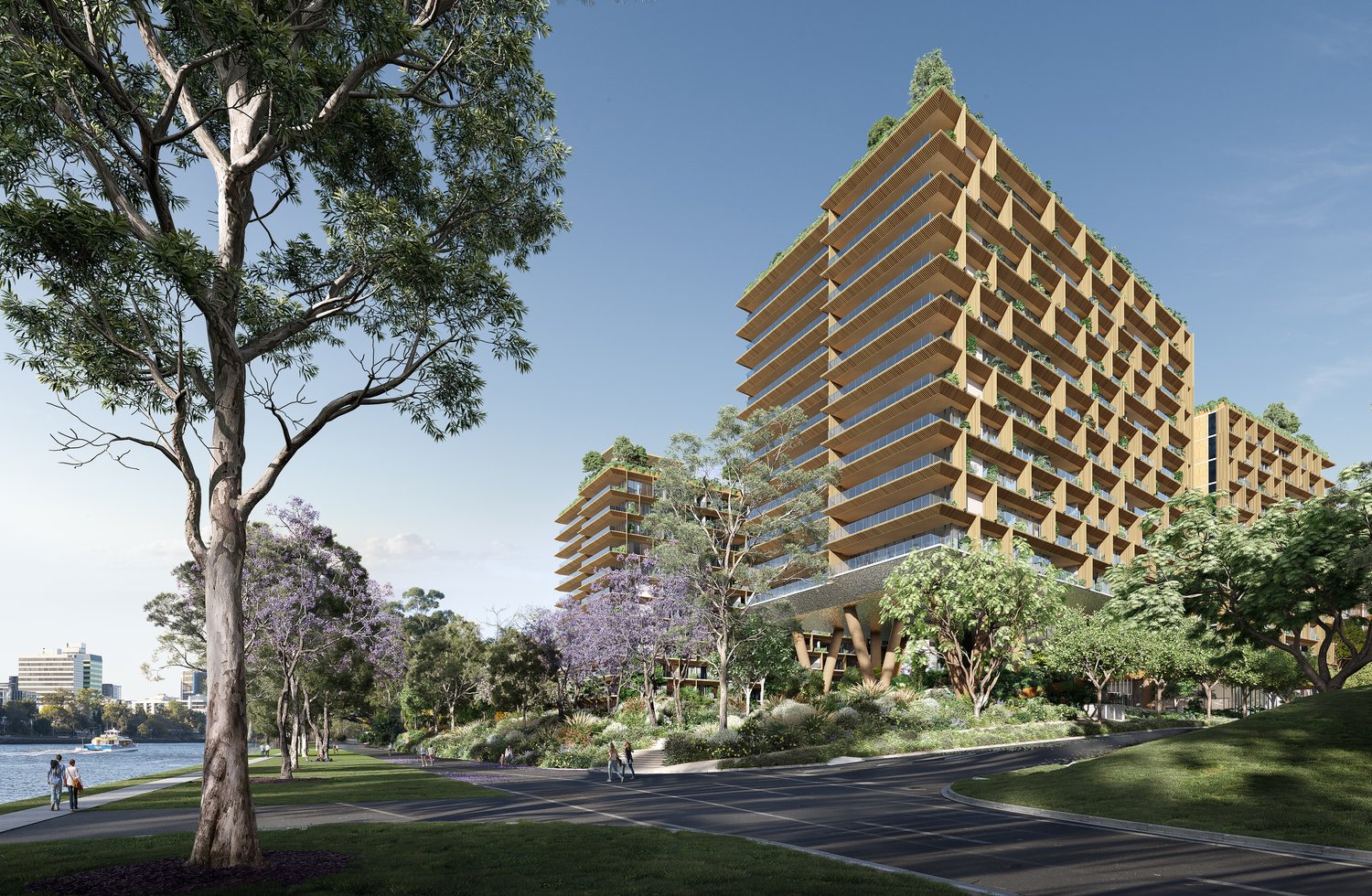 Photo credit: 117 Victoria Street – Image courtesy of Plus Architecture
Photo credit: 117 Victoria Street – Image courtesy of Plus Architecture
Speaking practically, that mindset change has seen Plus Architecture doing a lot more refits of existing heritage buildings that would potentially have been torn down in the past, which has an immediate benefit in terms of carbon utilisation.
“An existing building is a huge carbon sink. Carbon was used to make it, you tear it down and throw it away, and then you replace it with another carbon sink. Well, that’s double the carbon compared to fitting it out.
“It’s a case of bringing them up to standard code for all the dumb stuff like fire and egress issues, and also for ESD issues. And that’s a challenge in itself – how you balance refitting a heritage building and making sure that it meets environmental standards, as the end user wants to know that they’re doing their bit by being in that building as opposed to a worse building,” he says.
So, for Briggs at least, tick-the-box sustainability is a thing of the past, and the future of sustainability is a much more holistic approach.
“And issues like the 15-minute city are one part of that, but it flows out of those sorts of ideas. In a way, the 15-minute city is about creating communities that are resilient and self-sustaining. It’s a city of villages rather than the traditional car-dominated CBD in the middle where nobody lives and shuts down at 5:30 in the afternoon, and everyone drives out to their suburban houses.
“That’s the antithesis of sustainability,” he says.
Sky-High Expectations
So, if the key to sustainable development is a total mindset shift, how does that work for a huge industrial site?
Gigi Yuen, Sustainability Manager at Melbourne Airport has a huge landscape to operate on and says that every aspect of the business and development is in the process of being reconsidered for its sustainability aspects and environmental impact.
Yuen’s job is to work collaboratively across the business to support and drive the implementation of the Environmental, Social and Governance (ESG) strategy for Melbourne Airport released in February in 2022.
“Melbourne Airport’s been on this journey for a while now, and we recognize our responsibility for contributing to sustainability of Melbourne as a whole, and that’s why we’ve released our ESG strategy,” Yuen says.
“That document is all about focusing and outlining our commitments to making meaningful changes in the ESG space and also identify our priorities based on areas that are highest importance to our organisation, our stakeholders and our community. All of this is embedded through our organisation, through our corporate metrics and embedded in the business through scorecards and everyone’s KPIs,” she says.
 Photo credit: Melbourne Airport
Photo credit: Melbourne Airport
In 2021, the airport unveiled its 12 megawatt solar farm – the size of 26 soccer fields. The solar farm produces enough renewable energy to power all four passenger terminals and the airport is in looking at delivering a second solar farm to support its operation and tenants. In addition, the airport can supply GreenPower to its property tenants within the airport estate.
Melbourne Airport’s perimeter is expansive, ranking as the second largest in Australia, encompassing a diverse array of cultural and environmental elements. It sits on a plateau of land traditionally owned by indigenous people, and it’s also home to habitats such as a Grey Box woodland, and many species of significance.
“Our ESG strategy in itself safeguards and addresses the risks to the environment that an airport will pose as a result of our operations,” Yuen says.
“Essentially with any development work that we have, we really do challenge the design to ensure they have minimal footprint, therefore avoiding any impacts. And this is why Melbourne Airport has an environmental strategy around how we manage all this, because obviously whilst developing an airport is important, we also need to understand and respect the land as it is.”
Melbourne Airport’s environmental goals include reduction in both embodied and operational carbon – improving performance around emissions and energy usage.
During the past year it introduced an organics waste stream to manage terminal food waste in a sustainable way while removing the airport’s reliance on landfill.
There’s also extensive rainwater collection across the terminal, and the airport is constantly looking at ways to improve their stormwater network. In October they recommissioned the Steele Creek facility, which when it’s operating at its capacity, can process up to 1 million litres of water a day that can be reused in toilets, gardens and other uses.
And with the airport constantly evolving and growing (with plans to construct a third runway, pending approval) those environmental and sustainability goals directly influence decisions made on materials or construction methods at the airport.
“We’re talking to contractors just to understand what the possibilities are – the type of asphalt we can use, how we can achieve a reduction in materials used and where we can reuse soil excavated on site, or reduce the cement content in concrete,” Yuen says.
“This is an ongoing conversation. We’re constantly working with contractors and our designers to see whether we can push those limits a bit higher for their application and working with different industry bodies to advance opportunities in that space.
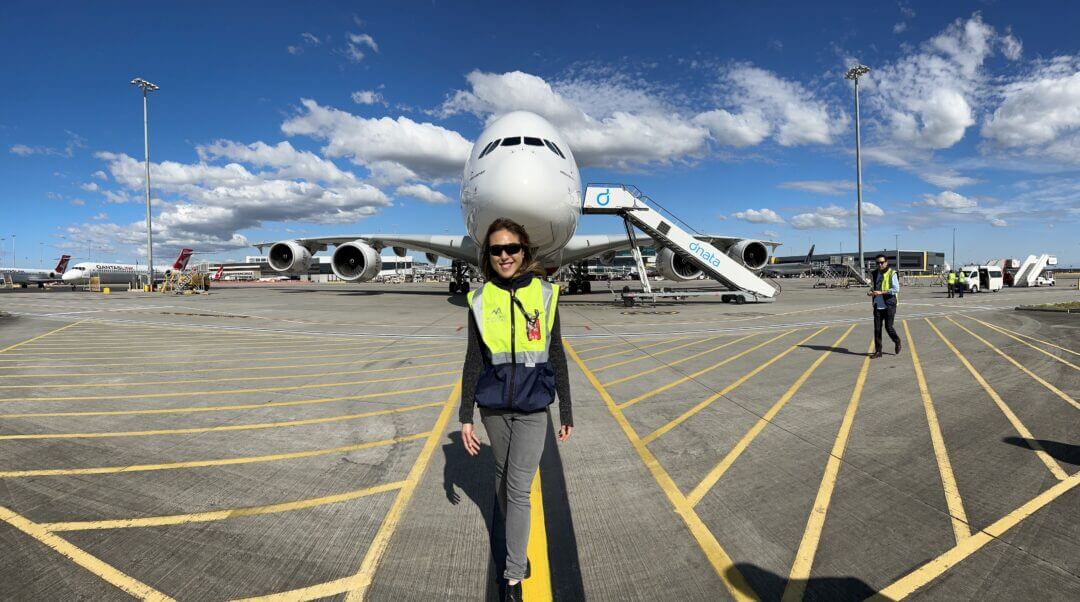 Photo credit: Melbourne Airport
Photo credit: Melbourne Airport
They’re also making sure they source locally where they can. And if not, making sure it’s an ethical supply chain rather than just the lowest cost.
Yuen says that Melbourne Airport does apply for Green Star certification of developments, but says it’s very much project specific rather than a blanket requirement.
“When you’re scoping out a project, understanding what the building is for and its suitability for a Green Star rating is important. It has to make sense. Depending on the scope of the project, we want to integrate that ESD principle in our designs and in our practices rather than always just go for the rating,” she says.
So, what insights can Yuen offer architects and construction businesses looking to embark on large scale projects and the sustainable practices within that?
“The first thing I’d say is that when you work in construction, it’s important not to bury your head in the sand and think you have no part to play in the degradation of the environment.”
She also challenges the industry to take more ‘measured risks’.
“My hope is that we continue to be innovative in our construction methodology and materials that we use. I know from a construction perspective, if you’re pushing against a hard timeline, you don’t have the time to trial things and you always go for what’s worked. But what’s worked previously is not working in the future,” she says.
So Melbourne Airport has some ambitious targets. How confident is Yuen that Melbourne Airport going to exceed those targets? Or is it a challenge just to keep up with them?
“I think like all things, if you don’t have the targets, you won’t go anywhere. And if you set a target too easy, then people are not on board. So, I think our targets are quite ambitious and it keeps people focused. The most important thing is to be on the journey and getting everyone engaged and on board with it,” she says.

